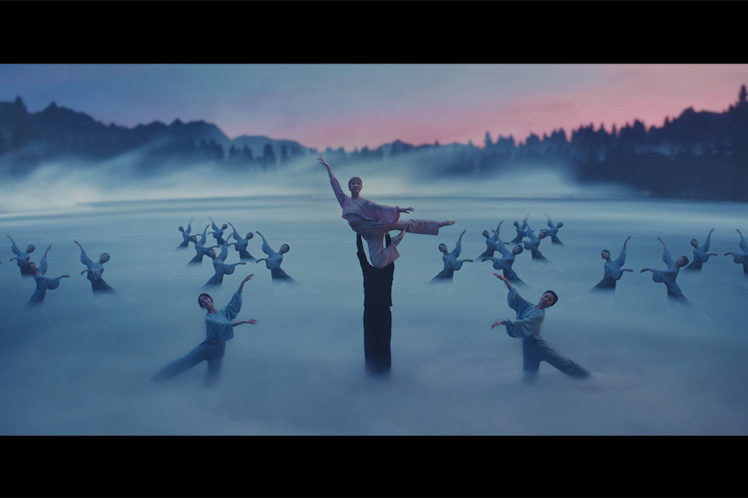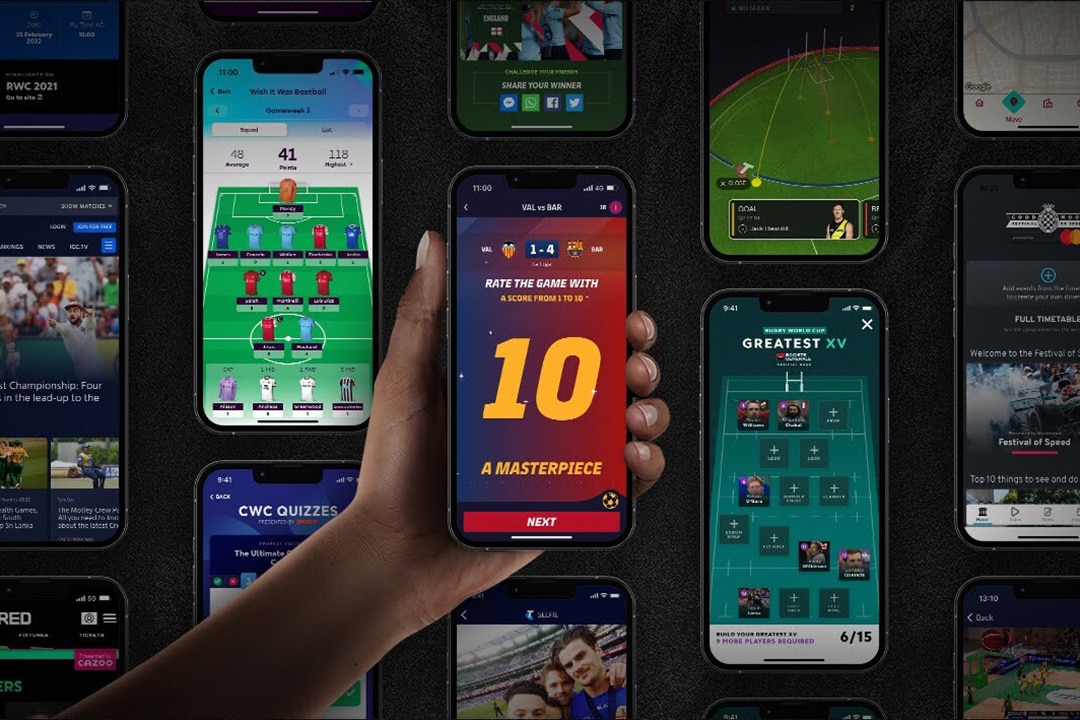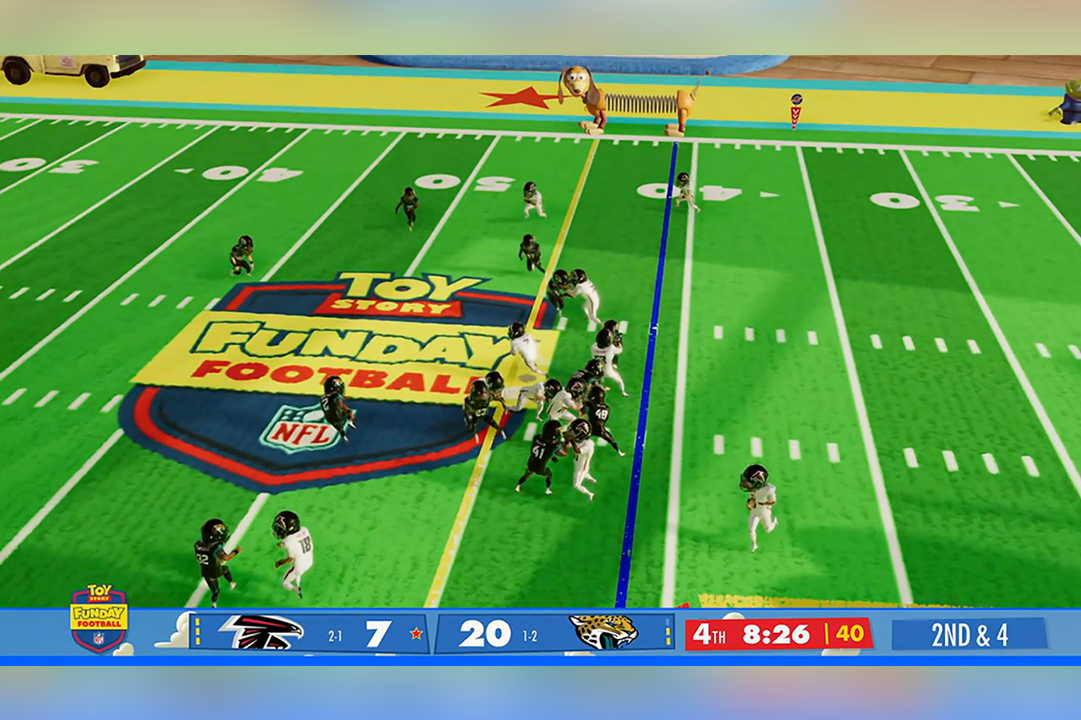Cutting Edge
Who is 8K reality for?
May 13, 2019
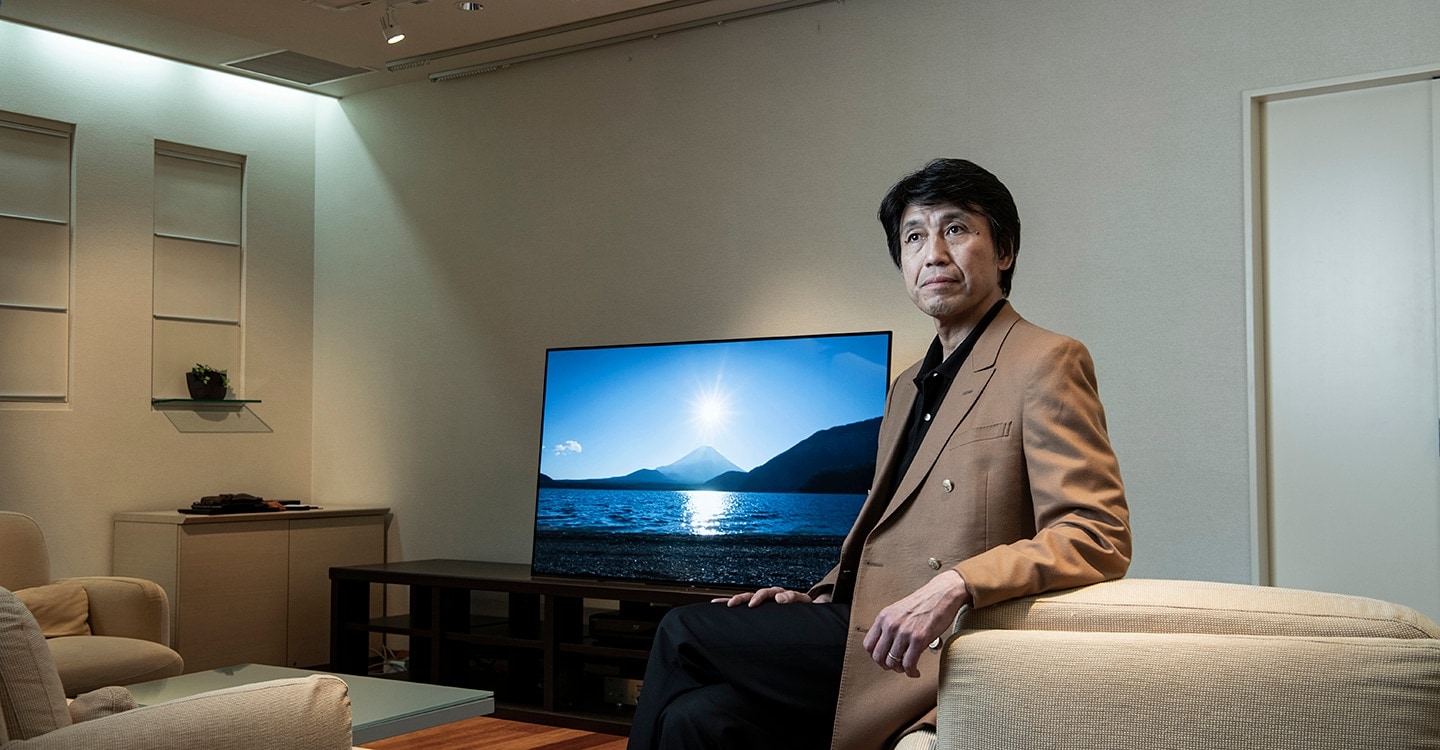
Sony has announced the Z9G, an 8K LCD TV in the BRAVIA® Master Series at the 2019 International CES. 8K is about 16 times the number of pixels of conventional television broadcasting (2K). Its value doesn’t merely lie in the provision of greater resolution, but rather in enabling a superior reality that helps creators deliver their true intent to the end user. We ask Toshiyuki Ogura, a technology evangelist, about the essence of 8K.
Profile
-

Toshiyuki Ogura
Technology Strategy Sec.,
TV Business Group,
Sony Home Entertainment &
Sound Product Inc.
The real value of 8K is in the reality it provides
──What kind of things are you currently working on?
Toshiyuki Ogura:While working to establish technology strategies as a technology evangelist, I am engaged in technology promotion and technology marketing activities. I remember when the resolution went from full HD to 4K. People were skeptical of 4K and said things like, “Full HD is plenty, we don’t need 4K.” But now, they are believers and say things like, “Wow, 4K is great!” Of course, that is because we were finally able to demonstrate the value of 4K.
Now, people have the same skepticism, saying, “4K is plenty, we don’t need 8K.” However, 8K has excellent value. The value of 8K is not just for us; rather it is for our customers and the content creators. My role is to correctly communicate that to the market.
──Was the development of 8K TV an extension of 4K? Or is it something else? Please share specific technological breakthroughs and distinctive development processes.
Ogura:There is no flashy new technology. It is a normal evolution of the elemental technology. However, in order to reproduce high-quality 8K images, we need to improve the quality of the input signal and sophisticate and optimize the internal signal processing circuit configuration as well as the processing capacity and quality. We also have to optimize the panel drive, the backlight drive, and various filters to maximize the performance of the display system. Furthermore, it is necessary to maintain an overall balance at a high level while enhancing each of those elemental technologies.
As a result of all these efforts, it becomes possible to achieve high-quality video that achieves the five elements of image quality: resolution, tone, frame rate, color gamut, and brightness range. The “eyes” of engineers who evaluate images and their technical expertise cultivated over the years are indispensable in achieving this.
Put another way, a single new technology alone is not enough to achieve the same quality level of video output. High-picture-quality TV is built on a high degree of combination of elemental technology, evaluation technology and expertise, which is precisely the source of Sony’s competitiveness in the television market.

──What kind of words can be used to express the sensory difference between 4K and 8K in terms of the expressive capability, descriptive capability, and so on?
Ogura:In a word, the real value of 8K is “reality,” or realness. It is often said that 8K has the advantage of high resolution and an increased amount of information, but just increasing the amount of information in the video does not make people feel that it is real.
For example, if subtle steps appear in the gradation, even if they are so subtle that they cannot be captured, the brain recognizes that it is not “real.” In that respect, 8K, with its highly sophisticated video quality, has very little impediment to reality, making it possible to reproduce images that are full of reality.
However, in order to get the best reality, it is necessary to view it from a “proper distance”. Generally, it is said that 8K television should be viewed at a viewing distance of 0.75 times the screen height (0.75H), but when viewing from that distance, I felt a bit uncomfortable. As a result of trying many times to change the viewing position by moving the chair back and forth, I reached the conclusion that a distance of about 1.2 to 1.5H delivers the peak of reality. I presented those findings at the 2018 International Display Workshops and received the Best Paper Award.
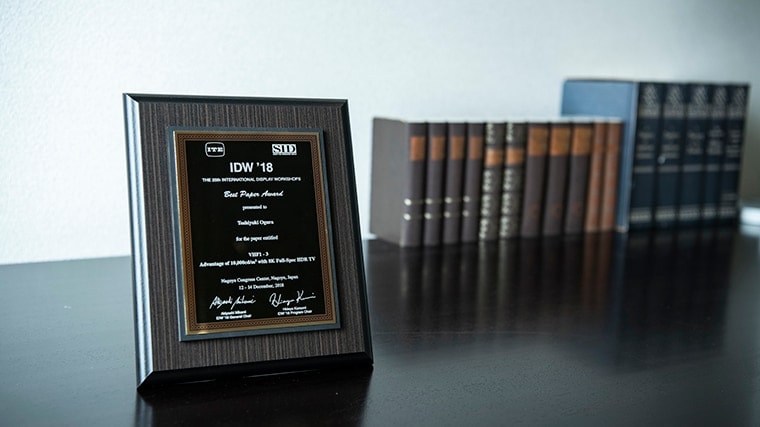
It’s the content that moves people’s emotions
──At this year’s CES, Sony announced the Z9G, an 8K LCD TV in the BRAVIA® Master Series. How do you think the content will change in the future as the 8K market takes shape?
Ogura:As I often say, no one is moved simply by a blank TV. People are moved by the content. Therefore, raising the expressive capability of the content will deliver greater excitement.
The 8K pixel density is critical in enabling the creators to deliver to the user what they really want the user to see. The de facto master monitors that creators of the production industry use are 30-inch 4K organic EL master monitors called BVM-X300. They use these monitors on their worktables to create their content. So, the expressive capability of these monitors provides the foundation for their creation.
This is what so-called “creator’s intent” is about.
What they see in those monitors represents the intention of the creator, and therefore, they desire their audience to see it as they see it. Sony has long used “creator’s intent” as a keyword, to create TVs capable of reproducing that intent.
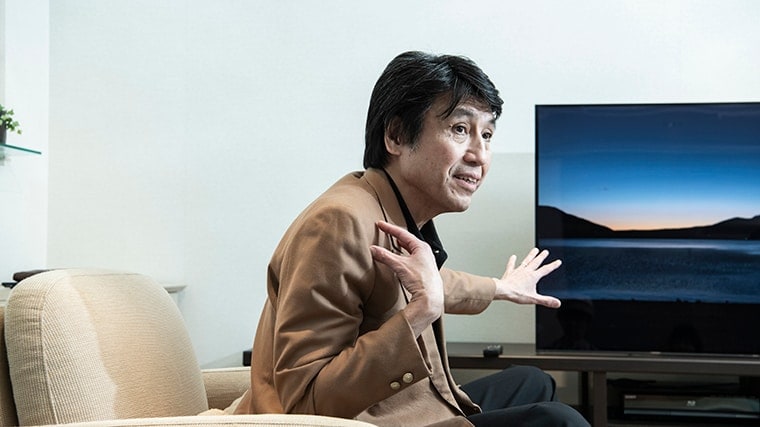
Ogura:With 4K and the HDR that came with 4K, it became possible to match the output color and brightness with those of the BVM-X300 at a very high level. However, there is still something different. We tried hard to find what was different, and finally now with 8K, we understand that it came from the pixel density. If you use 8K, you can reproduce the sense of image density of the BVM-X300 that cannot be achieved with just a large-sized 4K TV.
With the advent of 8K, now it is possible for even large TVs to express high reality. Now creators can deliver to the home their intent that they see on their 4K / HDR monitors. That fact alone is something that offers value to the customer.
Usually, this is not the kind of thing an engineer would be discussing. In fact, it typically is not the kind of thing that comes up even in general product planning and marketing either. Up until now, it was just one of those things that got lost in the works. By getting these kinds of unexploited stories through to creators and to users without fail, we will be able to have them understand the value of technology more convincingly.
In this way, I believe that the most important mission of the technology marketing I am engaged in is to clarify the value of the technology in question and get that value across in a way that everyone can understand it.
The resolution of the real world is infinite
──The evolution of technology, fostering ecosystems, social needs…. we really need to forecast the future from a variety of aspects and prepare for it. In that sense, what is your opinion about the trend of image quality improvement in future audiovisual products?
Ogura:Image quality can be quantified in terms of the five elements that I mentioned earlier. Each of those elements still have room for evolution, so image quality improvement in that sense will surely occur. However, just as the real value of 8K is in the reproduction of reality, the era of talking about the evolution of images just in terms of high image quality is almost at an end. I believe that we will shift from quantifiable qualities to more sensory values. In other words, we will make the shift to an evolution of moving experiences.
However, the important thing here is that, again, it is not the product itself but the content that brings excitement to people. No matter how high the image quality that the product delivers, without advanced content that takes advantage of the technology, you cannot deliver greater excitement. In order to trigger the evolution of such content, there will need to be a TV capable of reproducing content in such a manner that stimulates the creativity of various creators.
We create an environment that enables an enhanced content experience, we provide that to the creators, they in turn create more excellent content, and that is delivered to the people. That is the cycle we need to keep pushing. Sony is well positioned to keep that cycle going as we have the devices for producing and reproducing content, and we are close to many creators, e.g. Sony Pictures and Sony Music Entertainment.
Some 50 years ago, when there were only CRT TVs, in the film 2001: A Space Odyssey, already on the scene was the tablet, a device that was inconceivable with technologies of those days. Now, 50 years later, such tablets are commonplace. As you can see by that example, technology is the means by which we realize the world of imagination.
──In the future, will we continue with high image quality onward to 16K, 32K, and even higher? Or, will another value axis be born?
Ogura:The evolution of resolution will continue. The reason why is because the resolution of the real world is infinite. There will never be enough resolution to truly reproduce the real world. However, it is essential to consider value for money when it comes to consumer products. Therefore, any evolution that does not bring value will not occur. In other words, whether the evolution of resolutions continues or not depends on whether the same will actually deliver greater excitement to consumers or not.
As exemplified by the fact that the real value of 8K lies in its prowess in reproducing reality, whether or not image quality improvement continues will depend on whether or not we can continue with the evolution of value. Moreover, the evolution of the value should not rest merely in the evolution of image quality, rather it should be the evolution of the experience. So we should understand that the value axis itself will evolve and expand rather than another value axis being born.
Digital technology has finally begun to speak of quality

──What exactly do you mean by evolving the experience that TV can deliver?
Ogura:I can’t say in detail, but what we have in mind is providing entertainment equipment with video and audio as its core in a way that will provide even more comfort to home life and more abundance to life in general.
Many metrics in the world today are measured in terms of convenience and efficiency. When analog audio and visual were first digitized, users were quick to say how convenient and efficient digital media was. However, now, with the introduction of high-resolution audio, we have entered a new world of quality that can only be achieved in a digital format.
To put it another way, digital technology has finally begun to speak of quality.
Now, with 4K, HDR, and 8K, the same is happening with video. We are now at a level of quality that cannot be expressed with analog film anymore. We are entering the world of quality reachable only by digital. As it evolves, it may be possible to change how people approach entertainment and lifestyle.
With digital technology beginning to speak of quality instead of convenience and efficiency in a manner that it can appeal to our senses, what we at Sony have to do is to bring this evolution forward. To that end, we need to continue to provide products that inspire creative people and deliver their intent to our customers.
We don’t want people to just think Sony has great products, rather we want them to think the content is fantastic. So, we focus on what we can do to deliver great content to our customers. Speaking from this standpoint, I think we at Sony have much to offer for a variety of situations, whether they be home or personal situations.
──Finally, please tell us about yourself. You hold the title of Distinguished Engineer. What exactly does the role entail?
Ogura:The Distinguished Engineer (DE) system certifies engineers who have advanced expertise and technical insights in Sony’s key technology fields and have made significant contributions to Sony and its organizations. Currently, there are about 40 DEs in the Sony Group.
Engineers all have different personalities. However, once you are recognized by the company as a DE, then people tend to listen to you better. Unlike CTO, the DE system allows the company to acknowledge the individual engineer’s competency.
There have been several opportunities for DEs to get together and talk. Those were very exciting. Whenever you get people together that are capable of both high level and detailed discussions across a wide range of topics, it is very interesting. Having DEs throughout the organization can help spice things up here and there. So, in my mind, that is the DE system, to help lift the overall capability of Sony.
Prior to managing technology it is necessary to be able to discover and identify the value of that technology. And I think being able to maximize that identified value is one of the conditions for being considered a good engineer. The people who are capable of this are DEs and are tasked with mission of maximizing the value of technology in each area of specialization. I understand that this is expected of me, and it is a very rewarding role for me to fill.

